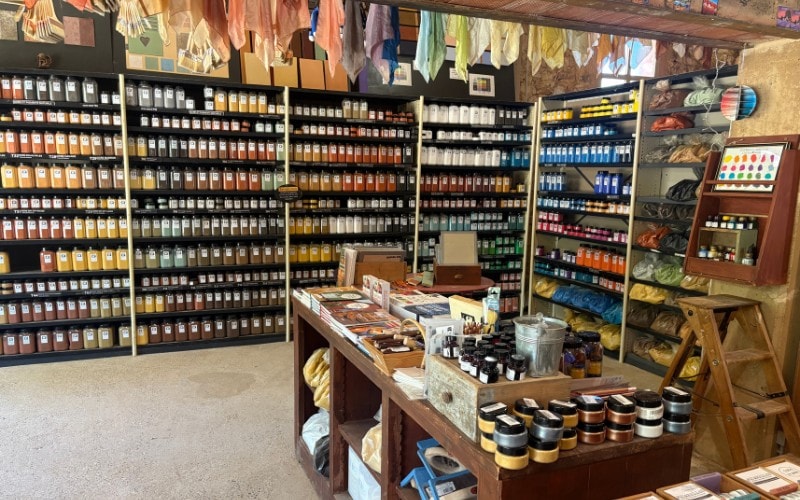Explore The Ochre Museum in Colorful Roussillon
Artsy Traveler contains affiliate links for products and services I personally use and can happily recommend. As an Amazon Associate, I earn from qualifying purchases. Please read the Disclosure for more information. If you make a purchase through these links, at no additional cost to you, Artsy Traveler earns a small commission. Thank you!
For a truly delightful—and delightfully colorful—museum experience far from the crowds, check out the Ôkhra Écomusée de l’Ocre just outside the village of Roussillon in the gorgeous Luberon region of Provence.
Here, you’ll learn how ochre was mined and processed, stroll through a magical slice of Provençal countryside, and maybe even leave with your own stash of ochre pastels or paints from the well-stocked shop.
What is Ochre?
Ochre is nature’s paintbox: a clay earth pigment composed primarily of iron oxide, tinged with sand and clay. Its hues shimmer from soft golden yellows to fiery oranges and deep earthy reds. For centuries, artists and artisans have ground ochre into powders and pastes to color walls, ceramics, textiles, and, of course, paintings.
Look around Roussillon and you’ll see ochre’s fingerprints everywhere—the warm red, amber, and saffron facades of the village glow in the Provençal sun thanks to this mineral pigment.
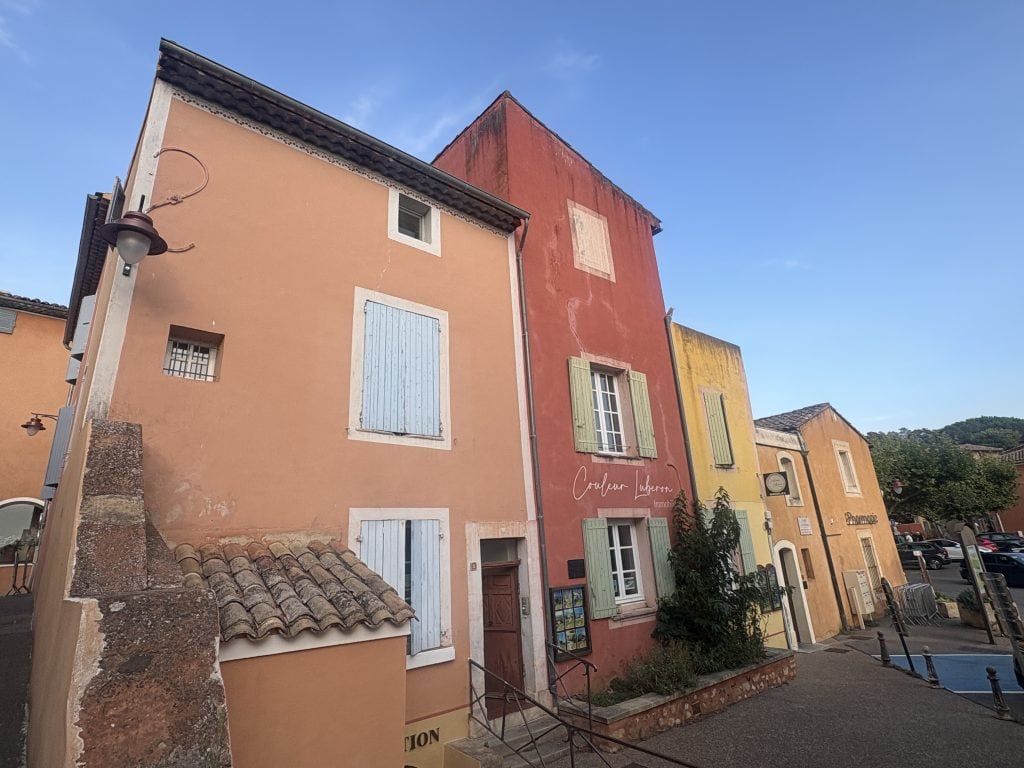
The Origins of Ôkhra
Ôkhra grew from the ruins of the Mathieu factory, which shut down in 1963. In its place, the Conservatoire des Ocres was born, with a mission to preserve the region’s unique heritage and celebrate the alchemy of color.
Step inside and you can watch demonstrations, try your hand with ochre paints and pastels in the workshops, or even take a course in pigment techniques.
A Visit to Ôkhra
Located at 570 route d’Apt, Ôkhra is only 2 km from the village of Roussillon. The museum is open 7 days a week from April to October. Check the website for other opening times and for available workshops, tours, and demonstrations.
In the museum, you’ll wander past old machinery once used to crush, wash, and sift ochre. There’s something wonderfully tactile about seeing the story of color embedded in these hulking gears and troughs.
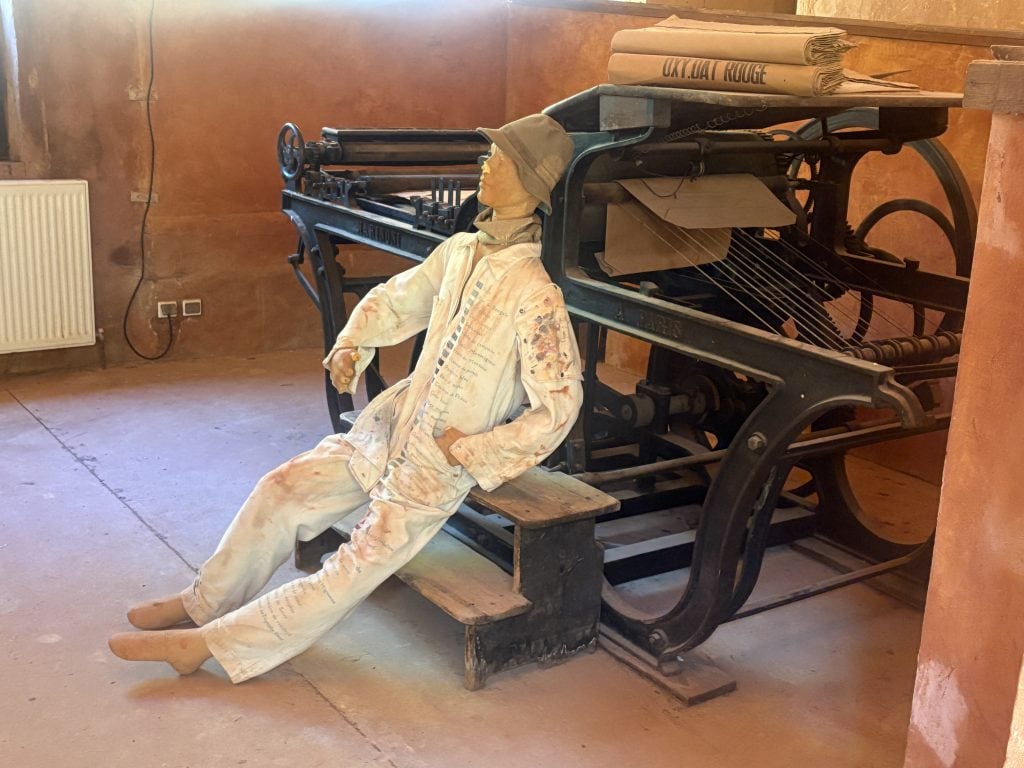
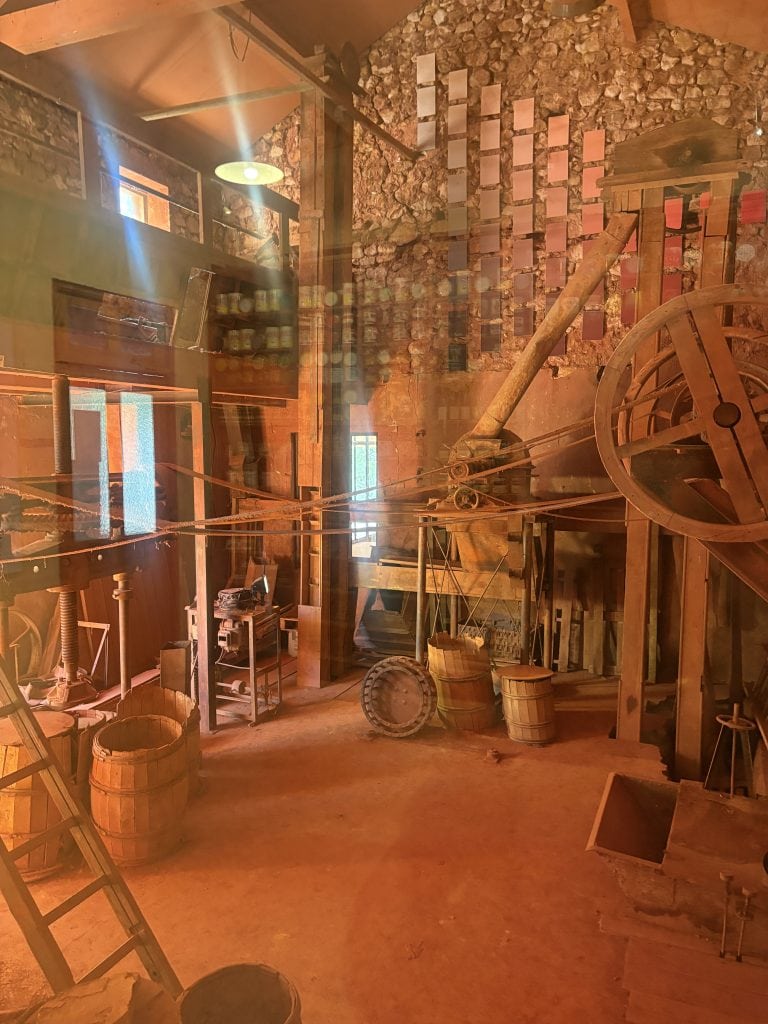
Afterward, head outside for a slow stroll through the grounds—part Provençal forest, part open-air gallery. When I last visited, a marvelous exhibition of photographs by local artists was scattered through the landscape, and the quality was astonishing.


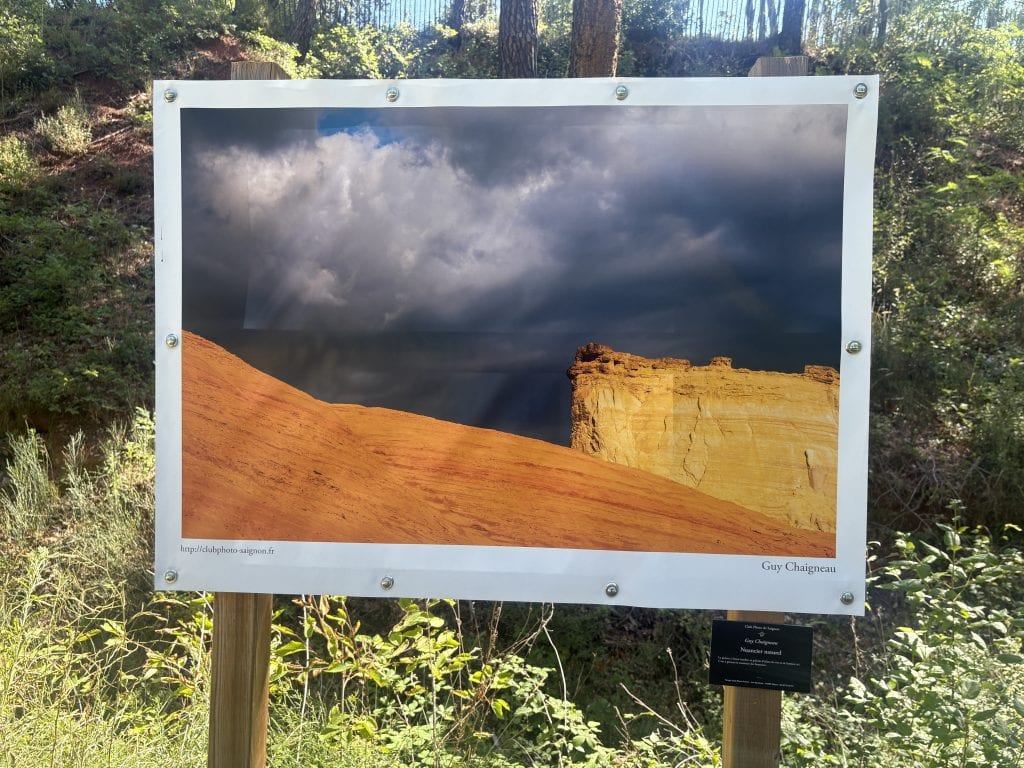
Playing with Ochre
Back inside, the real fun begins. Long tables invite you to pick up brushes and pastels and play with color to your heart’s content.
An attendant is on duty, ready to share tips on technique or explain how ochre is transformed from humble earth to luminous pigment.

Shopping for Ochre
Ôkhra’s shop is irresistible—shelves stacked with every shade of ochre, as well as books (including a few in English) and artist-quality supplies. My husband, Gregg, a painter, couldn’t resist stocking up on jars of ochre pigment to take home.
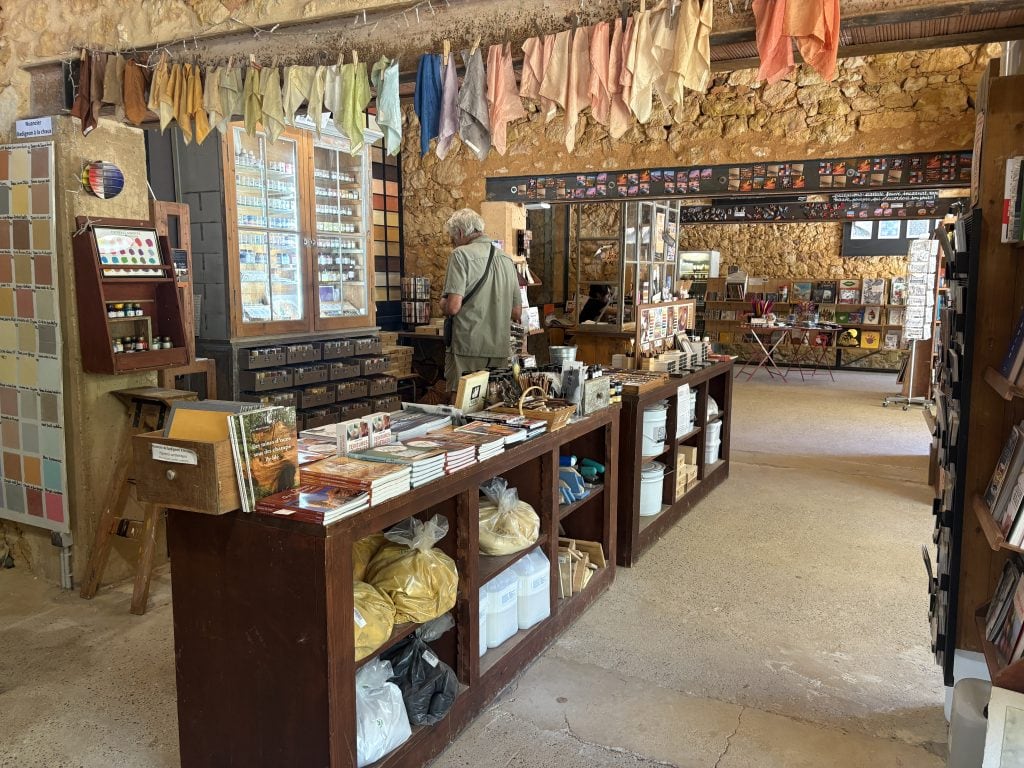
Staying in the Roussillon Area
Roussillon is officially listed as one of Les Plus Beaux Villages de France—and for good reason. The ochre-hued houses climb the hill in a patchwork of reds and yellows, framed by narrow lanes and shaded terraces. Yes, it can get crowded, but if you stay overnight you’ll enjoy the quieter early mornings and the golden hour after the tour buses depart.
Hotels I Recommend:
Les Sables d’Ocre has been my go-to for decades. A leafy oasis within walking distance of both Ôkhra and the village, with a turquoise pool framed by pines and a generous Provençal breakfast.
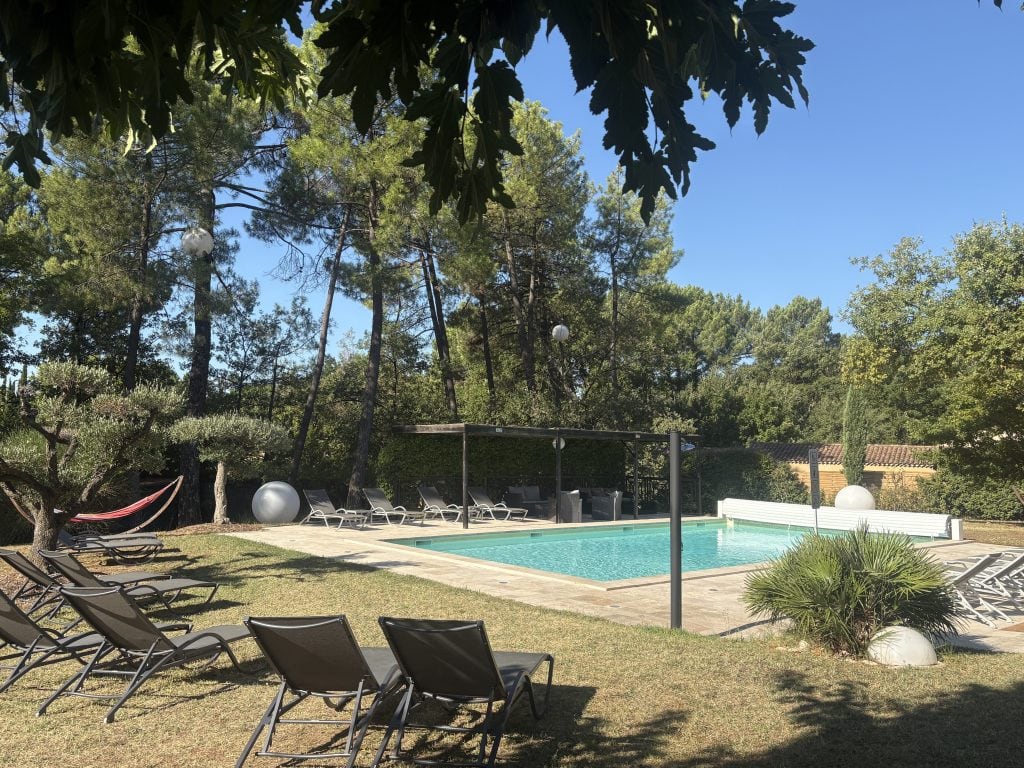
Other options include:
- La Maison des Ocres – Perched just at the edge of the village, this charming hotel boasts panoramic views of the ochre cliffs and the Luberon valley beyond.
- Hotel Les Ambres – Located 1.5 km from the village of Roussillon and features an outdoor swimming pool and a tennis court.
Dining in Roussillon
Roussillon may be tiny, but it punches above its weight in culinary charm. A few standouts:
- Restaurant David – Elegant Provençal dining with a terrace that looks out across the valley. Try the seasonal tasting menu if you can.
- Le Piquebaure – More casual, with hearty fare and sweeping views from its terrace. Perfect for a sunset dinner.
- La Grappe de Raisin – A cozy spot for traditional Provençal dishes, from lamb with herbs to lavender-scented desserts.
For a quick stop, grab a coffee and pastry at a café in the main square, and watch the swirl of village life pass by.
Things to Do Beyond Ôkhra
- Le Sentier des Ocres – A must-do! This marked walking path winds through the ochre cliffs just outside the village of Roussillon. The colors—burnt orange, crimson, and golden yellow—glow especially vividly in the afternoon light.
- Gordes & the Abbey of Sénanque – Just a short drive away, Gordes is another jewel of the Luberon, and the nearby abbey is surrounded by lavender fields in summer.
- L’Isle-sur-la-Sorgue – Known as the Venice of Provence, this town is perfect for a day trip, especially on Sunday when its antique market fills the streets.
- Wine tasting in the Luberon – Many nearby vineyards welcome visitors; look for rosés and reds that pair beautifully with Provençal cuisine.
My History with Roussillon
I first came to Roussillon in 1995 with my nine-year-old daughter. Back then, it was possible to scramble right up to the ochre cliffs (and yes, she rolled down them more than once). Her sneakers were permanently stained red—ochre souvenirs that even the washing machine couldn’t erase.
Today, access is more restricted, but the cliffs are still dazzling. With the right light and a camera in hand, you’ll come away with photographs that look almost unreal—glowing natural sculptures in shades of flame and gold.
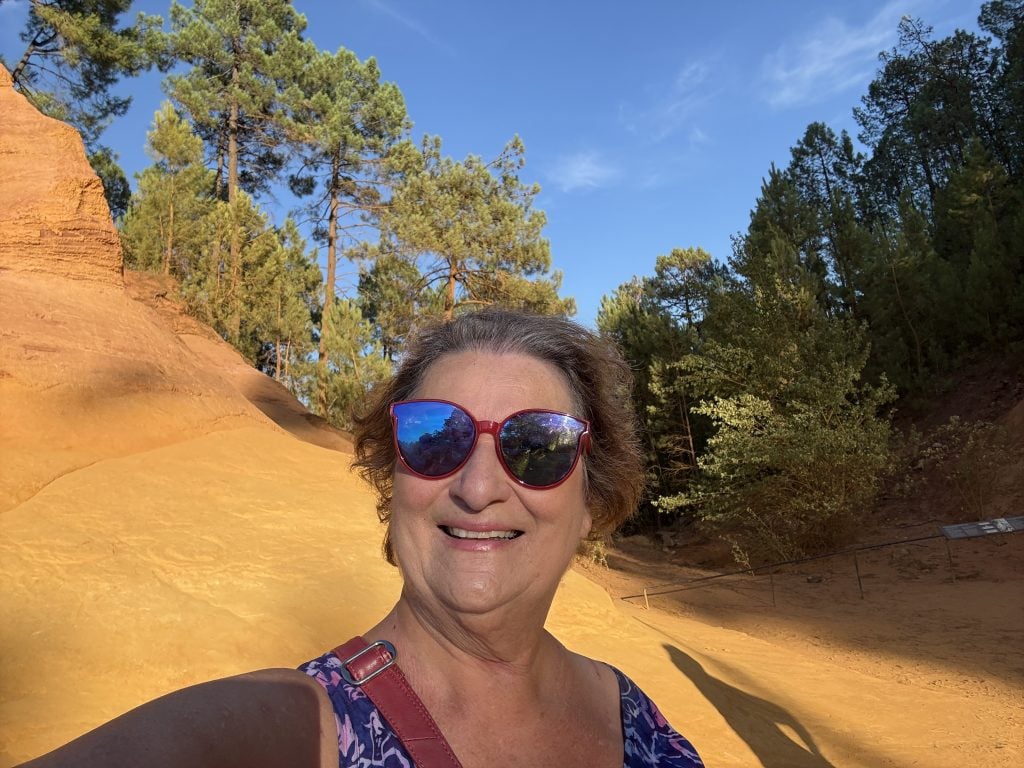
Roussillon is a village of color and memory. Combine it with a visit to Ôkhra, and you’ll leave Provence not only with photos, but with the pigments of history under your fingernails.
Conclusion
Have you visited Roussillon? Share your experience with other artsy travelers in the comments below. Here are more posts on unique small museums in Europe:
- Two Terrific Small Museums In Amsterdam You Should Visit
- Discover Three Unique Museums in Arles
- Best Tips for Visiting Beethoven House in Bonn
